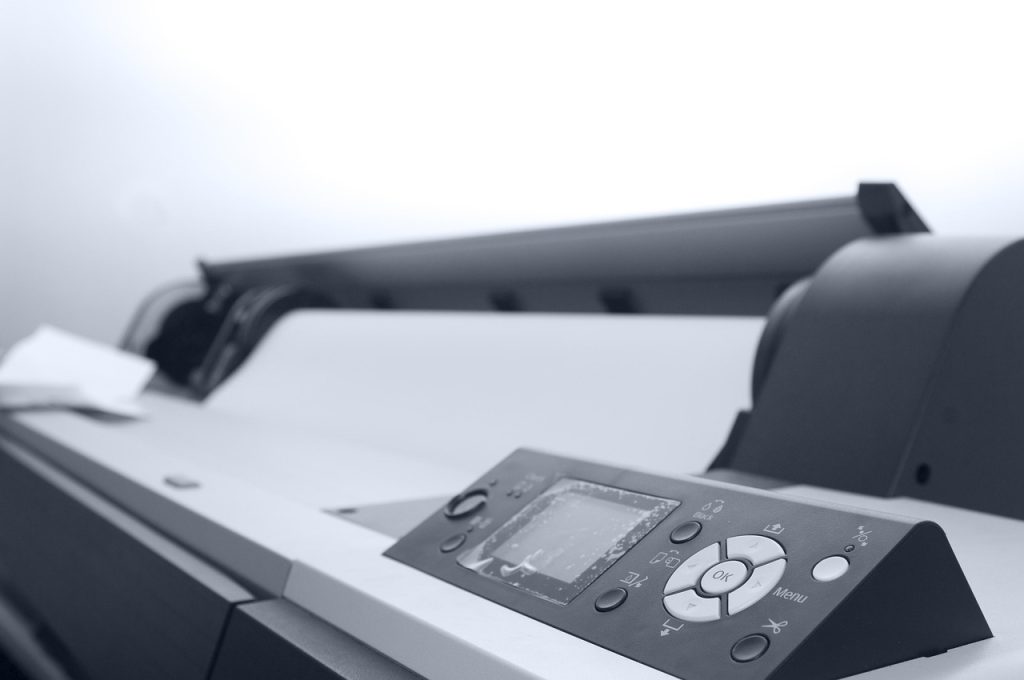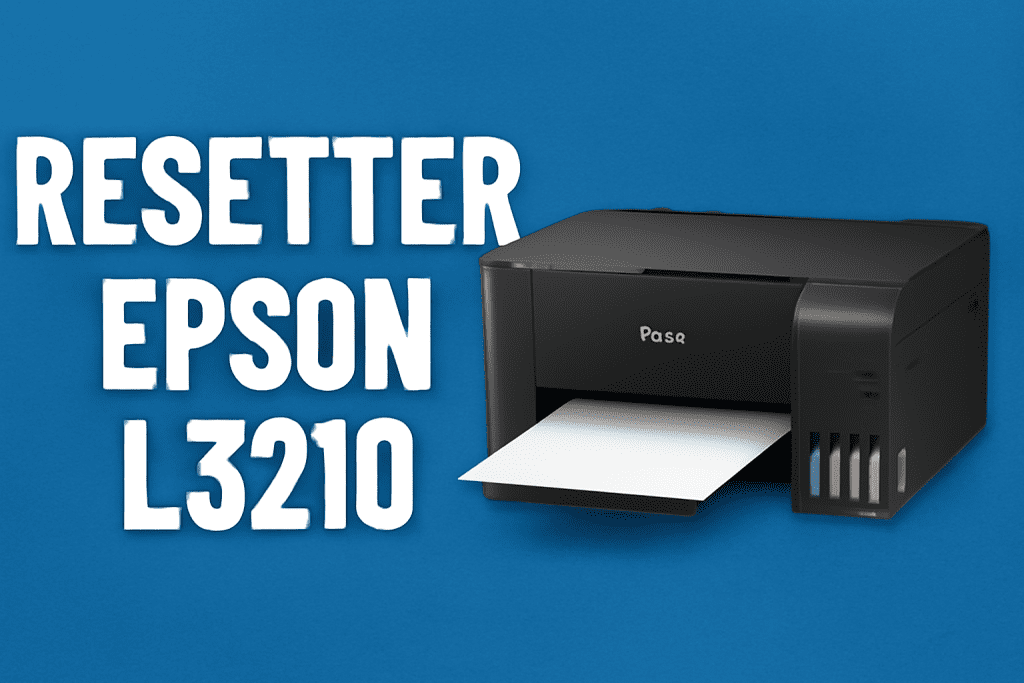Zentafile.com – You Know Printer Resetter ? If you’ve ever had a printer suddenly stop working and show strange messages like “Service Required” or “Ink Pad Is Full,” don’t panic just yet. It might be a sign that your printer just needs a little “nudge” with something called a printer resetter. In this article, I’ll walk you through everything you need to know about resetters—why you need them, what the risks are, and how to download and use them. Just relax, and think of this like a casual chat over coffee. Sit back, grab some snacks, and read on!
What is a Printer Resetter?
A printer resetter is like a bug repellent for a finicky printer. It’s a small piece of software that “restarts” your printer’s brain. So, if your printer is throwing a tantrum because it feels like it’s been working too hard, it’ll bounce back as good as new. It’s usually used when the printer shows errors like “waste ink pad counter full.” Simply put, the printer thinks its ink waste bin is full, even if it might not actually be.
To put it simply, a resetter is like resetting a house alarm that went off because a cat walked by. This doesn’t mean your printer is broken, it just needs a little reminder that life isn’t that hard.
Printers like the Epson L series (L120, L3110) or Canon MP series (MP287, MP237) are common culprits. So, if you own one of these models, get ready to meet your new resetter.
Why Does a Printer Need a Resetter?
Imagine working non-stop every day, no breaks, and then one day, your body says, “Enough, I need a vacation.” Well, printers are just like that. They have a work log system called a “waste ink counter.” When the counter hits a limit, the printer automatically stops working to prevent damage. But sometimes, it gets a little dramatic. The printer might still be in great shape, but the counter says otherwise. That’s when the resetter comes into play: it “tricks” the printer into thinking it’s still young and strong.
For example, the Epson L360 often gives an error after printing thousands of pages, even though the printhead is still in good condition. But because the system says, “Hey, the ink waste is full,” the printer stops working. It hasn’t even checked the ink pad to see if it’s really full.
Risks and Benefits of Using a Resetter
Benefits:
-
Saves money: You don’t need to rush to a repair shop where they sometimes create more problems than they fix.
-
Convenient: You can do it yourself at home while sipping coffee.
-
Longer printer life: A reset printer usually goes back to printing like it’s just come back from a vacation in Bali.
Risks:
-
Wrong usage: If you mess it up, your printer could end up even more stressed, causing a new error. For example, choosing the wrong printer model in the software.
-
Low-quality software: Some counterfeit resetters come with viruses. Your computer might get damaged before your printer is fixed.
Tip: Try to find a resetter from a reliable source. Check forums or websites dedicated to printers, and don’t forget to read user reviews.
Download Printer Resetters by Brand
To make things easier, here are some resetters you can download, with notes for each brand:
Epson
-
Popular models: Epson L120, L310, L360, L365, L3210.
-
Note: Epson has many models, so make sure the resetter matches. If you pick the wrong one, it might not work or could cause a blank screen.
[Download Epson Resetter here]
Canon
-
Popular models: Canon MP287, IP2770, G2000.
-
Note: Some Canon printers need to enter “Service Mode” before they can be reset. To do this, press “Resume” + “Power” together with a specific combination.
[Download Canon Resetter here]
HP
-
Popular models: HP Deskjet 2135, HP Ink Tank Wireless 415.
-
Note: HP printers are a bit more complex. Sometimes, you need to update the firmware before resetting.
[Download HP Resetter here]
Note: Before using a resetter, make sure to turn off your computer’s antivirus. Sometimes, antivirus programs mistake the resetter for a virus, even though it’s just trying to help your printer. Don’t worry as long as you’re downloading from a trusted source.
Step-by-Step Guide to Using a Printer Resetter (Like a College Student)
I know, tutorials can sometimes feel as complicated as reading an insurance contract. So, I’ve made it as clear as possible for you:
Step 1: Download and Extract the File
Download the appropriate resetter for your printer model.
The file will usually be in ZIP or RAR format. Right-click it, and click “Extract Here” using WinRAR or 7Zip.
Step 2: Prepare the Printer
Turn on the printer.
Connect the printer’s USB cable to your computer. Make sure the connection is stable, just like a relationship that’s not going to ghost you.
Step 3: Open the Resetter Program
Double-click the “.exe” file.
If a warning message pops up, click “Run Anyway.”
Select your printer model from the list.
Step 4: Enter Service Mode
This is the special ritual. Here’s how it’s usually done:
Press and hold the “Resume” + “Power” buttons together.
Release “Resume,” then press it again 5 times.
Let go of all the buttons.
The printer’s light will blink to indicate it’s in service mode.
Step 5: Reset the Printer
In the resetter program, find “Main Pad Counter.”
Click “Check” to check the status.
Once the result appears, click “Initialize.”
Wait for it to load. If it’s successful, you’ll usually see a “Finished” or “OK” notification.
Turn off the printer, and then turn it on again.
Voila! Your printer is back to life, ready to print your thesis, office tasks, or even love letters to your crush.
Why Does Printer Error Appear Suddenly?
Sometimes, you really care about your printer, just like it’s your buddy. It’s been there from the start, helping with assignments, your thesis, and even printing family photos. But then suddenly, the “Service Required” error appears. Why?
The answer is simple: printers have an automatic alarm to remind you that their insides (especially the ink pad) are getting full of ink waste from cleaning. It’s a safety feature from the factory to prevent ink from leaking everywhere. The problem is, this alarm can sometimes be too sensitive.
Printers are like an overthinking partner: afraid of breaking down at the slightest thing. But sometimes, the issue can be fixed with just a little reset.
What is a Printer Ink Pad?
The ink pad is like a big sponge that absorbs leftover ink inside the printer. Every time the printer cleans the nozzle or dumps extra ink, it gets absorbed by this pad. The more cleaning or printing you do, the quicker the pad fills up.
If the pad gets completely full and you just reset it without replacing it, ink might leak over time. So, after a few resets, it’s highly recommended to clean or replace the ink pad with a technician.
Things to Prepare Before Resetting the Printer
To make sure the reset goes smoothly without drama, here’s what you need:
-
Original or good-quality USB cable
-
Latest printer drivers (search the official website)
-
A resetter that matches your printer model
-
Laptop/PC with admin rights
-
Temporarily turn off your antivirus
-
Hot coffee and snacks (to calm your nerves)
5 Problems After Resetting and How to Fix Them
-
Printer still blinking: Repeat the reset process. Sometimes the service mode wasn’t done correctly.
-
Resetter not working: Try running it as “Run as Administrator.”
-
New error code: Make sure you’re using the correct resetter for your printer model.
-
Stripes in prints after reset: Do a nozzle cleaning in the printer settings.
-
Printer not detected by the computer: Update the printer driver. Sometimes the system needs the latest driver.
Real-Life Case Study: Successful Reset of Epson L3110
I have a personal experience. My Epson L3110 printer suddenly gave a “Service Required” error when I was about to print important documents for a competition. Was I panicking? Absolutely. But then:
-
I downloaded the L3110 resetter from a trusted forum.
-
Followed the steps like I’ve explained here.
-
The printer was working again in just 10 minutes!
-
And most importantly, I didn’t have to spend money on expensive repairs.
5 Signs Your Printer Needs a Reset
-
“Service Required” or “Ink Waste Pad Full” message.
-
Printer refuses to print, even though the ink is full.
-
Indicator light blinking alternately.
-
Weird noise when the printer is on, but it doesn’t print.
-
Printer turns on but gets stuck in cleaning mode.
If you see at least two of these signs, your printer likely needs a reset.
Common Issues When Using a Resetter
-
Resetter doesn’t detect the printer: Ensure the USB cable is in good condition. Ensure the printer drivers are installed correctly.
-
“Communication Error”: Repeat the service mode process. Try using a different USB cable.
-
Resetter file blocked by antivirus: Temporarily turn off your antivirus or set the resetter as an “exception.”
-
Printer still errors after reset: Check the ink pad. It might need replacement.
FAQ About Printer Resetters
Q: Is using a printer resetter safe? A: It’s safe as long as you use the right one and follow the steps carefully. Don’t click random buttons.
Q: Can all printer errors be fixed with a resetter? A: Sadly no. Resetters are only for errors like “waste ink pad full.” If your printer has a mechanical problem, you’ll need a real repair.
Q: Do I need to replace the ink pad after resetting? A: Ideally, yes. But if you’re in a pinch, reset first, and replace the pad later when you can save up for it.
Q: Can I use a resetter for all printer models? A: No. Each printer model needs a specific resetter. It’s like a key for a lock, not all keys fit all locks.
Q: Can a resetter damage my printer? A: If used correctly, it won’t. But if you mess up, there’s always that risk.
Q: How often should I reset my printer? A: Usually after 5,000–10,000 pages printed, depending on the model and your usage habits.
Additional Tips for Safety
-
Backup important data: Sometimes small errors occur after a reset. Make sure your important documents are safe first.
-
Watch a tutorial video: If you’re unsure, watch a YouTube tutorial.
-
Don’t rush: Take it easy and follow the steps carefully. Your printer isn’t going anywhere.
-
Ensure stable power: Don’t reset during a power outage or when the electricity is unstable, or your printer might suffer.
Conclusion
Dealing with a printer error like “waste ink pad full” is like dealing with an overdramatic partner. As long as you know how to “sweet-talk” it, the issue can be resolved without drama. A resetter is the most practical and cost-effective solution. But be careful, just like picking a life partner.
With this article, I hope you now understand all about printer resetters: what they are, why you need them, how to use them, potential problems, and safe usage tips. So, the next time your printer throws a tantrum, don’t rush to the repair shop. Just grab a coffee, open your laptop, and reset your printer like a pro!


[…] means your printer needs to be reset. Don’t panic! There’s a solution – use the Epson L3110 Resetter. Think of it as a tranquilizer for your stressed-out […]
[…] Download Printer Resetter All Brands: Free, Safe, and Complete Tutorial […]
[…] Download Printer Resetter Semua Merk: Gratis, Aman, dan Panduan Lengkap […]